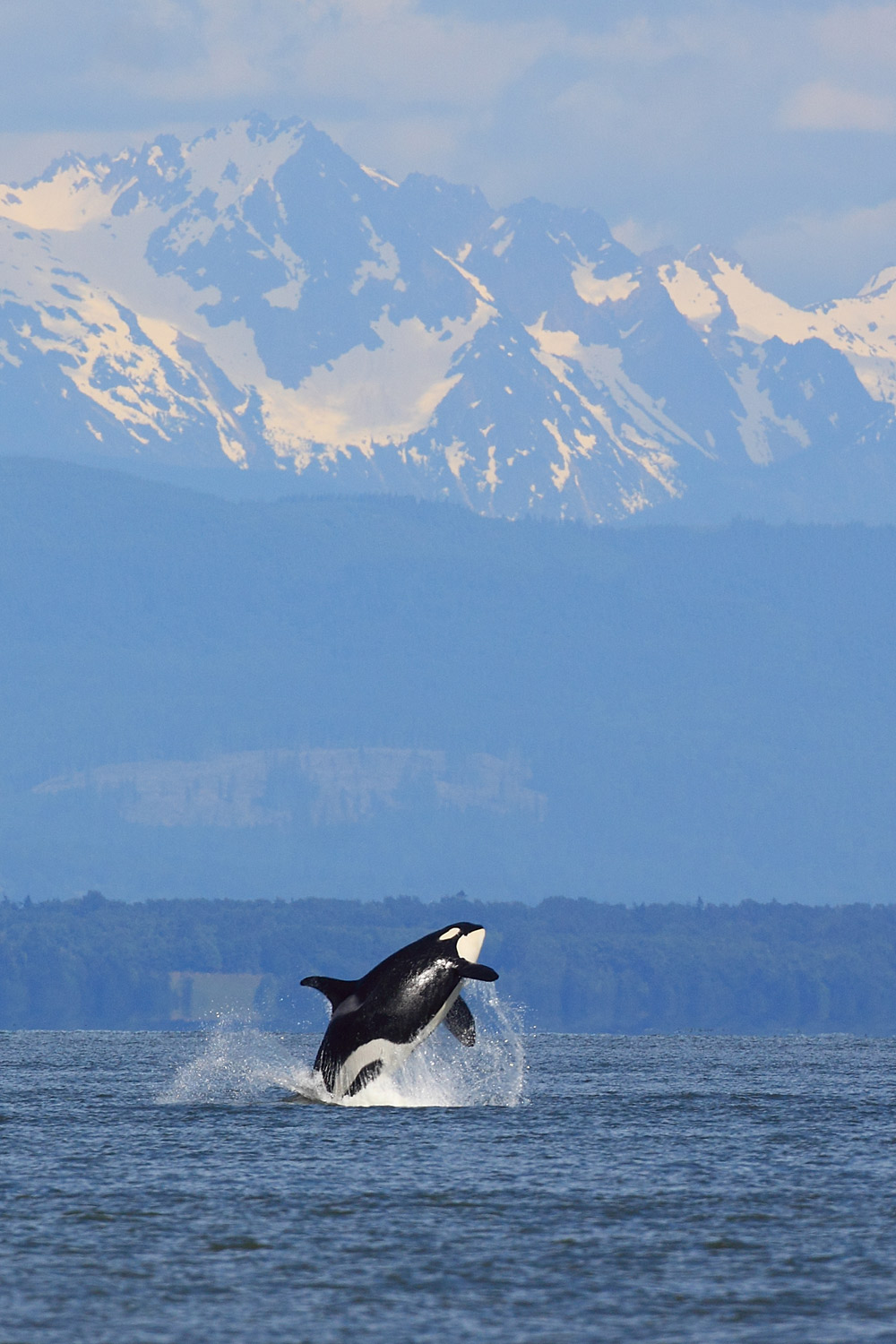What makes for a perfect whale photo? Photographer Bart Rulon shares the story behind this iconic shot. (A reminder that we’re running a 3-day photo expedition with Bart on Sept. 12-14. If you want to learn how to get shots like this – sign up pronto!)

“This photograph was taken on one of my private wildlife photo tours a few years ago. Getting a photograph like this was a classic example of being patient and prepared to capture a magic moment when it happens. We were photographing southern resident killer whales in Georgia Strait on this particular day, and when we arrived the orcas were grouped up tightly, traveling and resting. At first there wasn’t a whole lot of action, but the whales were all coming up and going down together very slowly as they often do when they are sleeping. Orcas sleep with one half of their brain asleep and the other half awake while they swim.
They kept this pattern up for quite a while as they swam northeast toward Canada. Eventually the whales woke up and spread out as if they were looking for salmon. Some of the whales (J-pod) split off and aimed toward Rosario Strait and we decided to follow them in order to see the Cascade mountains as an ideal backdrop for photography. When the whales are hunting they often spread out for miles and travel in small groups or individually looking for salmon. We were patient and let the orcas do their feeding for a long while. Then as if someone flipped a switch, they started to group back up together again as they got closer and closer to Lummi Island, and Rosario Strait. It was then that the action really started to happen.
We saw the first breach off in the distance, and then multiple orcas started breaching in different spots! The fun was contagious! When I saw the lineup, with breaching whales and mountains in the background, I put down my big lens and focused immediately on zooming back to get the mountains in the picture and ready just in case the orca came flying out of the water again. I changed my aperture quickly to optimize depth of field, in order to get both the orca and the mountain focused. I moved my autofocus point to the estimated spot where the orca might breach next, and then I waited. My heart was definitely beating fast, because these opportunities don’t come up every day, and I didn’t want to blow it! Patience and planning finally paid off when the orca came flying out of the water 3 more times, and I was perfectly positioned to get the shot I was looking for each time!! I love it when a plan comes together!”
